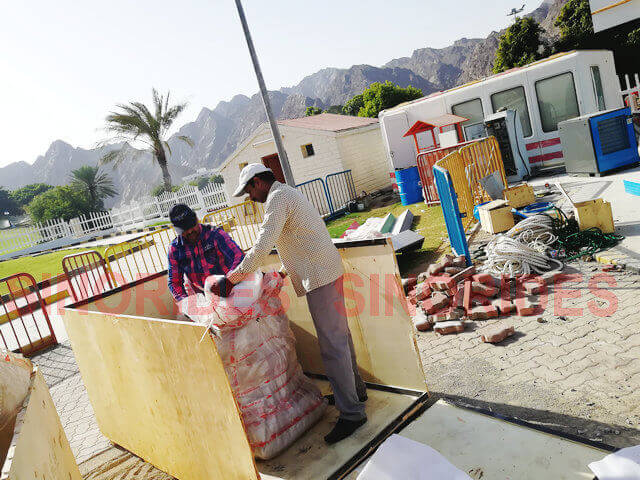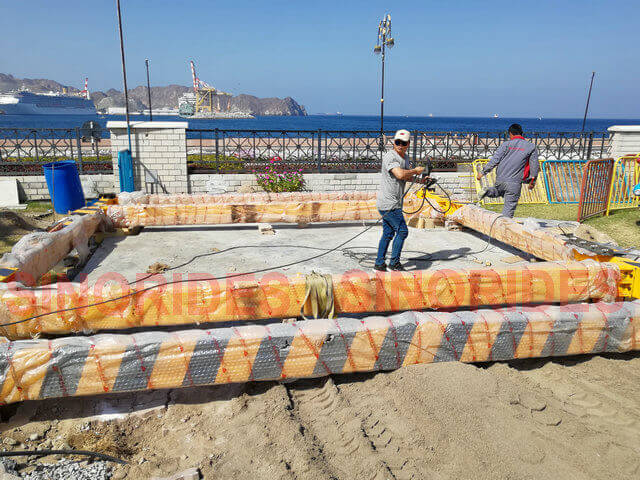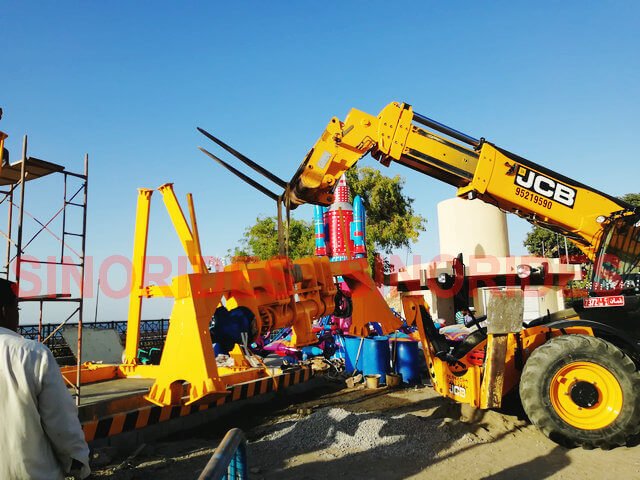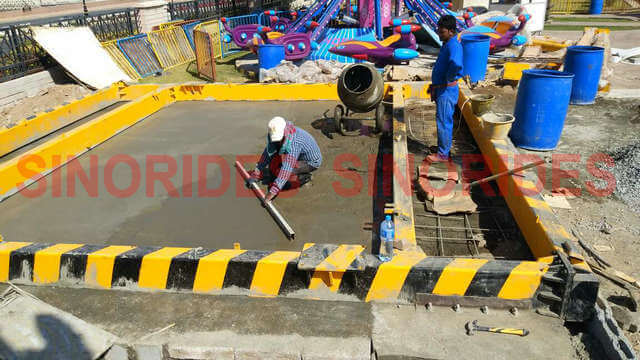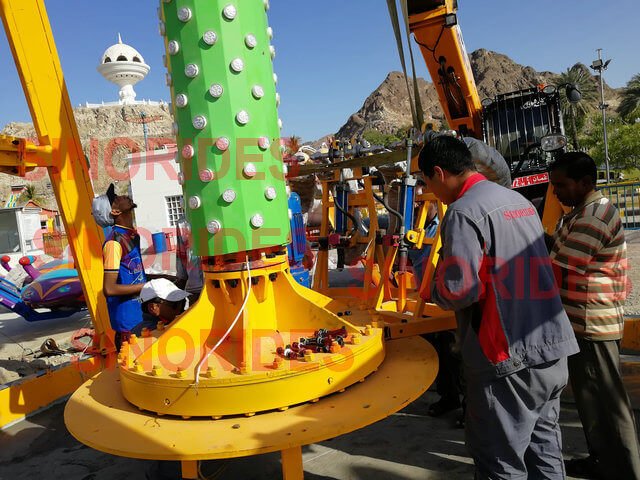How to Install Large Amusement Rides
I think you will agree with me when I say:
The installation of Large Amusement Rides is difficult.
Or is it?
Well, the installation of large amusement rides is not daunting as you thought.
In this post, I will show you the easy-to-use steps for the installation of large amusement rides.
Let’s dive in.
The main steps to install large amusement rides is:
- Construction conditions preparation
- Open-box inspection
- Basic survey and laying-out
- Basic inspection
- Installation & adjustment of amusement rides
- Amusement rides fixing and grouting
- Cleaning and assembling of components
- Construction of electrical engineering
- Trial operation of amusement rides
Let’s start from step 1.
1. Construction Conditions Preparation
Look:
No matter you seek roller coaster for sale or other equipment.
This is the very first step in the installation of amusement park rides.
The technical personnel must ensure to follow the design drawings to the letter when installing the amusement rides.
Why is this important?
It will go a long way to prevent accidents and also improve the efficiency of the amusement rides.
That’s not all:
Mistakes should be avoided in quality when selecting the main materials for the engineering work.
Once there is problem with the quality, the project will suffer great loss.
Also:
All the participating operators involved in the installation must be well trained and qualified.
The facilities on the site of installation should be adequate for the proper installation.
All instruments used for the total process of the installation of the amusement rides should meet the stipulated standard.
2. Open-box Inspection
Here’s the deal:
The construction personnel and the suppliers should participate cooperatively to check and take record when the amusement ride is being unpacked.
Check for:
- The packing conditions
- Case numbers and number of cases
- The name, specification and model
- Crucial parts should be inspected according to the accepted quality standard
- The technical documents (instruction manual, certificate of compliance etc.)
- The condition of the surface of the amusement rides (damaged or corroded)
3. Basic Survey and Laying-Out
Here:
The principles for setting baselines and reference points should be applied.
Why?
Because basic measurement line is a very vital component to attain the requirements for the positioning of the plane and spatial position of the amusement rides.
It is quite necessary for amusement rides such as pirate ship ride that need to be installed on ground.
The bottom line for the baseline and reference point is:
- Easiness of installation and detection
- Easiness of maintenance
- Clearness and easiness of identification
Here’s the deal:
For amusement rides that are special or heavy, settlement observation points should be put in place to monitor and analyse the variations during installation and use.
4. Basic Inspection and Acceptance
The quality assurance certificate of the amusement rides should be kept and provided on demand by the construction unit.
That’s not all:
Engineering testing firm with solid reputation and qualification should be hired to inspect the concrete strength, if it meets the accepted standard.
The quality of the appearance should also be inspected.
The bottom line is to ensure:
- No breakage or voids on the outward surface
- No oil and gravel on the base surface
- No exposed bars and bumps in the reserved holes of anchor bolt
5. Installation and Adjustment of Amusement Rides
Transport and Hoisting of Amusement Rides
Look:
Sometimes, transportation factor can hinder you from installing amusement rides in your park.
However, for the large-sized amusement rides like roller coaster and ferris wheel, you will need crane to move them to the installation site and hoist them once they arrive.
Amusement Rides Installation
The basic requirement for the installation of amusement rides is:
To ensure you fix the amusement rides at the PROPER points, so that all the components of the amusement ride are accurately in place.
6. Amusement Rides Fixing and Grouting
Look:
Anchor bolts should be used to tighten most of the amusement rides to the ground.
Failure to do this, especially the large sized amusement rides may lead to accident.
There are two stages for making grouting for amusement rides:
Firstly, by grouting to the anchor bolts.
This usually happens after you must have roughly fixed the amusement rides.
Secondly, grouting is done to the bottom and base of the amusement rides.
This is carried out after the amusement rides have been placed correctly and qualification test performed.
7. Parts Cleaning and Assembly
As you already know:
Amusement rides comprise many spare parts such as bolts, clutches, couplings, bearings, gears and seals.
But before you assemble them, check if there is any glitch.
Then:
You should apply grease to the various parts and fix them to their respective positions in the structure of the amusement rides.
7.1 Lubrication and Refueling of Mechanical Amusement Rides
Lubrication and refueling are necessary to ensure the normal operation of mechanical amusement rides. The lubricant can reduce the friction, surface damage and temperature, so that the amusement rides have good working performance and extend its service life.
Lubrication can be divided into two types: dispersed lubrication and centralized lubrication. Dispersion lubrication is usually manually filled with lubricant. Check and clean the lubrication points carefully before the trial operation of the amusement rides to ensure that the lubrication parts are clean. The selection of lubricant shall be determined according to the design and user requirements, and the filling amount shall be appropriate. Centralized lubrication usually consists of a lubrication station, pipelines and accessories, which transport a certain amount of pressured lubricant to each lubrication point through the pipeline.
The installation of a centralized lubrication system usually requires a higher degree of cleanliness, good sealing and reasonable aesthetics of the laying of the pipelines.
In general, the construction procedures of the centralized lubrication system are:
- Installation of Amusement Rides & Components
- Pipe Support Production and Installation
- Pipe Cutting and Bending
- Pipe Welding
- Pipe Installation
- Pipe Acid Washing
- System Cycle Flushing
- System Pressure Testing
- Adjustment and Test Running
7.2 Construction of Electrical Engineering
Electrical engineering construction mainly includes the power supply of substations, electric parts of electric amusement rides and appliances, and wiring systems that connect the two.
7.3 Cooperate with civil engineering construction
Work content: Laying wires and conduits simultaneously with civil engineering; Embedding and reserving embedded plates, embedded parts and holes for electrical purposes and recombination of dimensions; In lightning-proof earthing engineering, the part using building foundation steel reinforcement as earthing device and column reinforcement as the lightning-proof leading-down line is constructed along with civil engineering.
Working steps: Understand the civil construction plan and coordinate the planning arrangements; check and accept the buried materials and embedded parts; carry out the pre-buried reservation work for the embedded work; observe and monitor the civil works to prevent displacement when the concrete is poured; Confirm the position of the parts after the demolition and clean up the concrete residue.
7.4 Emplacement of Electrical Equipment
Work content: Various electrical installations are in place, fixed with the construction equipment in place, and the corresponding electrical parts are fixed in combination.
Working steps: Electrical unpacking inspection; confirm the compliance of civil engineering for electrical installation; using horizontal and vertical hoisting machinery to put the electrical in place; fixing according to specifications or requirements of amusement rides; conducting a comprehensive inspection, including the degree of firmness and the integrity of components, Wire connection, etc.
7.5 Laying of Wiring System
Work content: laying of conduits, bridges or other protective enclosures; connection of conductors such as transformer power distribution amusement rides; wire, cable laying, closed bus installation and other forms of wiring; wire, cable insulation inspection; wire, cable joint production.
Working steps: Material acceptance and appearance inspection of wiring system; non-standard or on-site support production; wiring system positioning (piping, bridge installation); The protection shell is connected; The protection shell is grounded or connected to zero; Protection shell cleaning; Laying wires, cables and fixed closed bus bars; Check the insulation of wires and cables; Make intermediate or terminal connectors.
7.6 Electrical Circuit is On
Work content: Confirm that the amusement rides have been installed and are ready for connection; Carry out insulation inspection on amusement rides; Wires and cables are connected to power supply amusement rides.
Working steps: Take each amusement ride or bus section as the connection unit; check whether the circuit of the connection unit meets the design requirements; conduct insulation inspections on the amusement rides and electrical cables; check the integrity of the connection; fasten the conductive connection according to the specifications; check the connection. Whether the creep age distance and discharge distance of exposed conductive parts meet the requirements of the specification.
7.7 Electrical Handover Test
Work content: The low-voltage part is mainly used for insulation strength and condition detection, review of the scale indication of important protective devices; simulation action test of the low-voltage control circuit; Issue test report.
Working steps: Check the consistency between the actual status of the project and the design; obtain the written documents of the relay protection settings provided by the power supply department or the design; test each amusement ride, system, circuit, and relay protection device according to the transfer test standard; Group linkage test; simulate the operation test of power receiving and transmission control, seal the value fixation site, and issue the test report.
7.8 Power Test
Work content: Review the results of the handover test; the high-voltage amusement rides in the transformer substation receive power and send power to the low-voltage switchboard; the low-voltage switchboard sends the power to the final-stage distribution box and control box step by step.
Working steps: Review the handover test report; prepare the power transmission plan; implement the organization and personnel; check the safety warning and protective measures; check the fire fighting equipment; test the power according to the principle of first high voltage, then low voltage, first main line and then branch line, power test step by step; Running of the electric amusement rides.
7.9 Load Test Run
Work content: Test of amusement rides, combined test, no-load test, full-load test, partial load test; Test running current, voltage, motor speed, bearing temperature rise, lighting illumination, etc. Eliminate defects found during trial run.
Working steps: Write the trial operation plan, after the trial operation starts, periodically check various electrical and non-electrical parameters; fill in the trial operation record after the trial operation is completed; and stop the defect found during the operation to eliminate the defect.
8. Construction of Electrical Engineering
As you know:
Electrical engineering is the heartbeat of amusement rides such as drop tower rides and zipline roller coaster.
If there’s no electricity, there would be no power and that will consequently hinder the smooth running of the amusement rides.
How do you avoid electrical failure?
By:
- The provision of substation
- The assembly of electrical parts
- Setting up electrical wiring system
- The procedures of the electrical engineering of amusement rides are:
- Cooperation with the civil construction engineer
- Placing of electrical equipment
- Laying of wiring system
- Connection of electrical circuit
- Test of electrical system
- Run of load trial
Note:
All the above procedures should be carried out before the successful running of your amusement rides.
9. Trial Operation of Amusement Rides
The very last step of the installation of amusement rides is trial operation.
The purpose is:
To enable you review the quality assurance of all the previous installation procedure.
That’s not all:
It also helps you to adjust the amusement rides due to faults in design or fabrication.
It has two stages:
• Post-installation debugging (it entails lubrication, hydraulic, pneumatic and electrical system)
• Trial operation of single amusement rides (they are first freed of any kind of load and then, with load for the trial)
Conclusion
As a matter of fact, these are the nine simple procedure you have to follow to safely and successfully install your amusement rides.


